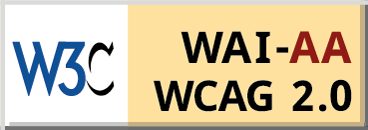TICAD 9 and the Indian Ocean: Prospects for India–Japan Collaboration
- October 01, 2025 |
- Issue Brief
Summary
At TICAD 9, Japan advanced initiatives like the Indian Ocean–Africa Economic Region and the Nacala Corridor, combining its Djibouti-based security role with infrastructure projects. India has deepened trade, energy, and maritime ties with Mozambique, Kenya, and Tanzania. India and Japan’s complementary approaches offer Africa new avenues for connectivity, industrialisation, and agency in a rules-based Indo-Pacific order.
Introduction
The Ninth Tokyo International Conference on African Development (TICAD 9) in Yokohama in August 2025 marked a defining moment in Japan’s engagement with Africa. Prime Minister Shigeru Ishiba announced two distinct but complementary initiatives. The first was the Indian Ocean–Africa Economic Region Initiative, designed to align Africa’s economic transformation with the broader vision of a Free and Open Indo-Pacific (FOIP).[1] The second was a region-wide co-creation initiative for Mozambique, Malawi, and Zambia, titled ‘Strengthening the Global Supply Chain through Nacala Corridor Development’.[2]
While the Indian Ocean–Africa Economic Region Initiative provides the overarching strategic framework, the Nacala Corridor project represents a concrete step toward operationalising that vision by linking landlocked Zambia and Malawi to global markets through Mozambique’s Nacala Port. For India, these initiatives present both opportunities and imperatives. New Delhi’s enduring African engagement, anchored in capacity-building, concessional finance, and developmental partnerships, positions it as a natural partner. The imperative is to ensure that its economic and security cooperation strengthens African agency, complements Japan’s initiatives, and advances regional stability.
Japan’s Strategic Calculus and the Nacala Corridor
Japan has historically lacked a coherent strategy for Africa.[3] Its engagement with African states lagged well behind India’s (and to some extent China’s) full-throated advocacy of decolonisation and indigenous development models, instead opting to work through former colonial powers on the continent. However, externalities such as the OPEC oil shocks of the 1970s and the anti-Japanese sentiments in Southeast Asia led the Japanese foreign policy establishment to view Africa as a promising alternative base for aid and development assistance.[4]
In the twenty-first century, three interrelated factors further impeded Tokyo’s outreach toward African states. These were the resource-driven growth seen in several African economies at the turn of the century, the growing salience of critical minerals and other primary inputs in what is known presently as the Fourth Industrial Revolution and the successive discovery of such resources in Africa, and finally, the rise of China as a plausible challenger to Japan’s ‘aid diplomacy’ in the late 2000s and early 2010s.[5] In Shinzo Abe’s broad second innings as prime minister (2012-2021), TICAD as a platform was given more leeway to grow into the ‘model for Asian donor powers’ engagement with African states that it is now. By the late 2010s, Tokyo’s gross outlay was two to five times greater than China’s estimated “ODA-like” values, and Africa’s emphasis in Japan’s development financing portfolio had grown steadily.[6]
Normatively, TICAD’s central role has also evolved in line with Japan’s strategic calculus. Due mainly to the three factors mentioned in the previous paragraph, especially in light of China’s growing capabilities in each of these, Japan under Abe steered TICAD beyond traditional foci such as human security and capability-based growth to include traditional security paradigms. At TICAD6 in Nairobi, Abe articulated the ‘Free and Open Indo-Pacific’ concept. The Nairobi Declaration outcome document included language on improving African states ‘capacity for surveillance and containment, cross-border security, coordinated border management and peacekeeping operations.’[7] This signalled Tokyo’s desire to conjoin earlier emphases on state capacity and human security with newer emphases on regional security and order-maintaining functions. After Abe, newly minted economic security paradigms[8] have also found a place in TICAD’s objectives, due to which its focus is now shifting again to incorporate supply chains.
Japan has steadily embedded security cooperation into its FOIP agenda within this evolving framework. Japan has, in recent years, strengthened its security presence in the Western Indian Ocean by maintaining Japan Maritime Self-Defence Force (JMSDF) counter-piracy operations from its Djibouti base, while simultaneously bolstering littoral capacities through the provision of patrol boats, training initiatives, and assistance under the Djibouti Code of Conduct (DCoC) framework.[9] Bilaterally, it has formalised defence ties with Kenya,[10] donated patrol craft to Tanzania, [11]expanded coast guard fleets in Seychelles and Mauritius, and donated a patrol vessel and fishing boats for Cabo Delgado in Mozambique. [12] This mix of hard presence and soft capacity-building underscores Tokyo’s aim to secure sea lanes, counter piracy and trafficking, and uphold a rules-based maritime order across the Indo-Pacific.
Parallel to these security efforts, Japan has advanced connectivity and supply-chain integration through flagship infrastructure projects such as the Nacala Corridor. The Nacala Corridor exemplifies Japan’s ambition to integrate Africa more deeply into global supply chains. It connects Malawi and Zambia, two resource-rich but landlocked states, to the Indian Ocean through Mozambique’s deep-water port. Japan’s earlier investments, including port development completed in 2023, have expanded cargo handling capacity.[13] Building on this, the new initiative envisions modernised transport networks, industrial zones, and agricultural hubs. The corridor traverses regions rich in copper, cobalt, graphite, and rare earths critical for the global energy transition. By investing in infrastructure and industrialisation, Japan aims to secure access to these resources while supporting Africa’s priority of moving from raw commodity exports to value-added production.[14] Tokyo’s emphasis on transparency, quality infrastructure, and sustainability distinguishes it from other models.
For Africa, the corridor aligns with the African Continental Free Trade Area (AfCFTA) and Agenda 2063, promising lower transport costs, greater regional integration, and expanded industrialisation. Yet risks regarding financing gaps, political instability, and security challenges in northern Mozambique could slow implementation. Maintaining African ownership of the project is essential to prevent dependency narratives. Japan’s involvement in Cabo Delgado further illustrates its integrated approach, combining humanitarian aid, security assistance, and LNG infrastructure protection. This demonstrates Tokyo’s recognition that resilient supply chains require developmental and security foundations.
India’s Expanding Role in Africa’s Indian Ocean Littoral
India’s engagement with Africa finds its most concrete expression along the Indian Ocean littoral, where Mozambique, Kenya, and Tanzania serve as key partners. In Mozambique, ties are anchored in energy and security. The number of Indian companies in Mozambique has now increased to over 100. Indian investments in Mozambique are valued at approximately USD 10 billion.[15] Defence cooperation has grown steadily as well. India has supplied patrol vessels, trained Mozambican officers, and undertaken trilateral naval exercises with Mozambique and Tanzania to secure the Western Indian Ocean. [16]
Kenya and Tanzania further reinforce this arc of engagement. India is Kenya’s third-largest trading partner after China and the UAE. Over 200 Indian companies are in various sectors, including manufacturing, pharmaceuticals, telecom, IT and Information Technology Enabled Services, banking, and agro-based industries.[17] On the strategic front, the two Indian Ocean littorals adopted a Joint Vision Statement on Maritime Cooperation, focusing on safe navigation, counter-piracy, hydrography, and blue economy initiatives.[18]
India and Tanzania have reinforced their partnership through deeper trade and maritime cooperation. India ranks among Tanzania’s top five investors, with over 630 projects worth USD 3.74 billion creating 60,000 jobs. At the same time, bilateral trade is being streamlined through local currency settlements and enhanced agricultural exports under India’s Duty-Free Tariff Preference scheme. On the security front, the two Indian Ocean neighbours are expanding maritime collaboration. This is marked by the first joint EEZ surveillance exercise in 2023, bilateral naval drills, a trilateral exercise with Mozambique, Indian hydrographic surveys of Tanzanian ports, and a new White Shipping Information agreement that together align economic opportunity with a shared commitment to safeguarding the Western Indian Ocean. [19]
What distinguishes India in these littoral states is its focus on capacity-building and human development through affordable medicines, vocational training, or agricultural cooperation approaches that resonate with local needs and complement Japan’s capital- and technology-driven initiatives. The two countries can generate meaningful synergy by combining strengths, where Japan provides finance and advanced infrastructure. At the same time, India offers cost-effective solutions, local networks, and diaspora linkages that lower entry barriers. Delhi and Tokyo can embed their partnership more deeply into Africa’s Indian Ocean rim, where connectivity and security challenges converge.
Assessment: Opportunities and Challenges
Japan and India’s engagement in Mozambique and the wider East African littoral must be seen against opportunities and persistent challenges. The Asia–Africa Growth Corridor (AAGC) demonstrated how ambitious frameworks can falter during execution if projects are not tailored to local realities.[20] For the Economic Region Initiative and the Nacala Corridor to succeed, planning must prioritise African needs such as industrial parks, agro-processing hubs, and logistics facilities while fostering confidence among private investors. Africa’s broader strategy of diversifying partnerships away from single-power dependence provides an encouraging backdrop for such efforts.
Japanese business sentiment toward Africa has strengthened in recent years, with JETRO’s 2024 survey showing profitability expectations at their highest in a decade. Over half of firms anticipate increased profits and expansions by 2025, particularly in promising sectors such as renewable energy (solar and hydrogen), food products, and power infrastructure. However, this optimism is tempered by persistent perceptions of risk.[21] The report also highlights the structural barriers that continue to shape Japanese corporate strategies, even amid rising confidence in Africa’s growth potential.
Mozambique reflects this paradox most clearly. Despite its strategic location along the Mozambique Channel, which is vital for Japan’s sea-lane security and India’s broader Indian Ocean vision, corporate confidence remains fragile. Regulatory bottlenecks, weak infrastructure, and persistent security risks deter investment, even as the country’s LNG reserves, renewable energy potential, and maritime hub status position it as a key node for Indo-Pacific connectivity.
The Nacala Corridor exemplifies the promise and fragility of Mozambique’s role in regional integration. While it links landlocked economies to the Indian Ocean, its functionality is undermined by high transport costs, border delays, and climate vulnerabilities, exemplified by the devastation of Cyclone Jude in 2025. Structural weaknesses in the northern provinces, including poverty, food insecurity, and poor road safety, further erode stability. The Cabo Delgado insurgency is the most destabilising, as it has displaced communities and stalled LNG projects, with risks spilling over into the corridor. These challenges jeopardise Mozambique’s economic potential and threaten Indo-Pacific connectivity, underscoring the urgency for India and Japan to pursue credible stabilisation measures alongside developmental engagement.[22]
Japan’s response follows a three-pillar approach: humanitarian assistance, security strengthening, and LNG development. Investments in food security, maternal health, and relief for displaced persons aim to reduce vulnerabilities that feed extremism. Security measures, including maritime patrols and border control support, help contain militant influence along Mozambique’s coast, where ports like Nacala are vital to Southern Africa’s global trade access. Meanwhile, Japanese financing and technical assistance for LNG projects underscore the link between stabilising Cabo Delgado and safeguarding broader economic geographies.[23]
This aligns seamlessly with the MAHASAGAR initiatives for India, emphasising sea-lane security, blue economy cooperation, and regional integration. The Africa India Key Maritime Engagement (AIKEYME) launch in April 2025 at Dar-es-Salaam marked a significant milestone in India’s maritime partnership with Africa. Bringing together navies from Comoros, Djibouti, Kenya, Madagascar, Mauritius, Mozambique, Seychelles, South Africa, and host Tanzania, alongside India, the exercise underscored a shared commitment to tackling common maritime security challenges.[24] The deployment also included INS Sukanya’s visit to Nacala, highlighting India’s naval diplomacy and its role as a net security provider in the Western Indian Ocean.
It is worth highlighting that, within East Africa, Kenya and Tanzania enjoy comparatively greater economic stability than Mozambique. However, the region’s sustainability hinges on addressing Mozambique’s developmental shortfalls and gaps in regional integration. Despite its abundant natural resources, Mozambique ranks 182nd on the 2023 Human Development Index, with widespread poverty and malnutrition, particularly acute in the northern provinces along the Nacala Corridor. Regional mechanisms such as the AfCFTA, Southern African Development Community (SADC), Common Market for Eastern and Southern Africa (COMESA), and the East African Community (EAC) provide frameworks for deeper integration, but fully realising their potential requires optimising key corridors. [25]
Conclusion
The initiatives launched at TICAD 9 particularly the Economic Region Initiative and the Nacala Corridor signal a new phase in India–Japan–Africa cooperation. By pooling complementary strengths, the two countries can support Africa’s aspirations for industrialisation, connectivity, and integration, while advancing their strategic goals of resilient supply chains and balanced Indo-Pacific competition. The failure of the AAGC offers lessons, such as avoiding empty declarations, prioritising private sector involvement and ensuring alignment with African priorities. If India provides developmental depth and Japan brings financial and technological capacity, together they can deliver visible results, strengthening Africa’s agency, diversifying supply chains, and reinforcing India–Japan solidarity as a pillar of Global South cooperation. The success of these initiatives will shape the future of India–Japan–Africa cooperation and the credibility of FOIP as an inclusive vision for the Indo-Pacific.
Views expressed are of the author and do not necessarily reflect the views of the Manohar Parrikar IDSA or of the Government of India.
[1] “Announcement of “Economic Region Initiative of Indian Ocean-Africa”, Ministry of Foreign Affairs Japan, 20 August 2025.
[2] “Launch of the Region-Wide Co-Creation for Common Agenda Initiative for Mozambique, Malawi and Zambia: Strengthening the Global Supply Chain through Nacala Corridor Development”, Ministry of Foreign Affairs Japan, 20 August 2025.
[3] Katsumi Hirano, “TICAD and the National Interest of Japan”, Japanese Studies, Vol. no. 32, Issue No. 2, 2012, p. 184; Tomohiro Hosoi, “METI and Japanese Scramble: Re-definition of Japan’s African Policy under the Second Abe Administration and Future of African Summit Diplomacy”, The Pacific Review, Vol. 38, Issue 3, 2025, p. 425.
[4] Hosoi, op. cit.
[5] Hirano, op. cit., pp. 186-190.
[6] Brittany Morreale, “Japan’s Africa Engagement”, in Lam Peng Er and Purnendra Jain (eds.), Japan’s Foreign Policy in the Twenty-First Century: Continuity and Change, Lexington Books, Lanham, Maryland, 2020, p. 333.
[7] Ibid, p. 344.
[8] Akira Igata and Brad Glosserman, “Japan’s New Economic Statecraft”, The Washington Quarterly, Vol. 44, No. 3, 2021, pp. 25-42.
[9] “Japan: Building up Capacity in the Western Indian Ocean and the Gulf of Aden”, Djibouti Code of Conduct.
[10] “Signing of Statement of Intent on Defense Cooperation and Exchanges between the Ministry of Defense of Japan and the Ministry of Defence of the Republic of Kenya”, Japan Ministry of Defense, 09 February 2024.
[11] “Handover Ceremony of a Patrol Boat for the Project of ‘Tackling Illegal Maritime Activities’” (UNDP)”, Embassy of Japan in Tanzania, 22 April 2022.
[12] “Cabo Delgado: Japan Donates Patrol Vessel Valued at $6.8M and 40 More Fishing Boats”, 360Mozambique, 14 July 2025.
[13] “Holding of the Nacala Port Inauguration Ceremony: Expectations for Enhanced Connectivity between Mozambique and Neighbouring Countries, Improved Logistics, and Economic Impacts”, Japan International Cooperation Agency, 13 December 2023.
[14] “Opportunities in Transport and Logistics Infrastructure in Mozambique”, MozambiqueExpert.
[15] “India-Mozambique Bilateral Relations” Ministry of External Affairs, 2025.
[16] “Handing Over Two Interceptors to Mozambique at Nacala”, Press Information Bureau, 09 November 2024.
[17] “Union Health Minister Dr Mansukh Mandaviya along with Dr. William Ruto, President of the Republic of Kenya Address India-Kenya Trade and Investment Forum”, Press Information Bureau, 05 December 2023.
[18] “India-Kenya Joint Vision Statement on Maritime Cooperation in the Indian Ocean Region–BAHARI”, Ministry of External Affairs, 05 December 2023.
[19] “Joint Statement during the State Visit of the President of Tanzania to India and launch of Strategic Partnership between India and Tanzania”, Ministry of External Affairs, 09 October 2023.
[20] Takuya TANIGUCHI, “Should We Forget about the Asia-Africa Growth Corridor?” The French Institute of International Relations (IFRI), 19 October 2020.
[21] “Survey on Business Conditions of Japanese-Affiliated Companies (Africa),” Japan External Trade Organization(JETRO), December 2024.
[22] “Mozambique – Transport Corridors for Economic Resilience Mozambique Series of Projects 2 Project (English). World Bank Group, 30 May 2025.
[23] “Publication of the Proposed Cooperation Menu of Co-creation for Common Agenda Initiative for the Republic of Mozambique: ‘Stabilization of Cabo Delgado Province to Strengthen Supply Chains’, Ministry of Foreign Affairs of Japan, 22 August 2025.
[24] “Africa India Key Maritime Engagement 2025”, Ministry of Defence, Press Information Bureau, 12 April 2025.
[25] “Mozambique – Transport Corridors for Economic Resilience Mozambique Series of Projects 2 Project (English).





